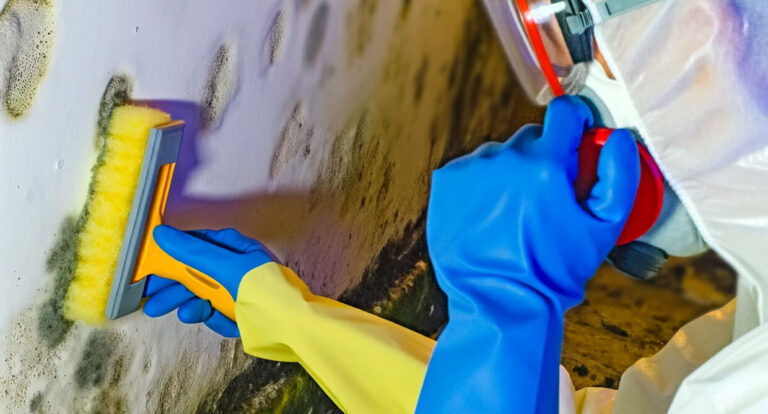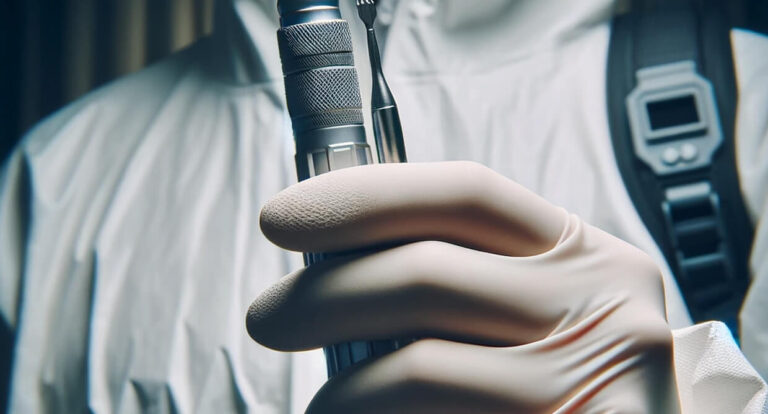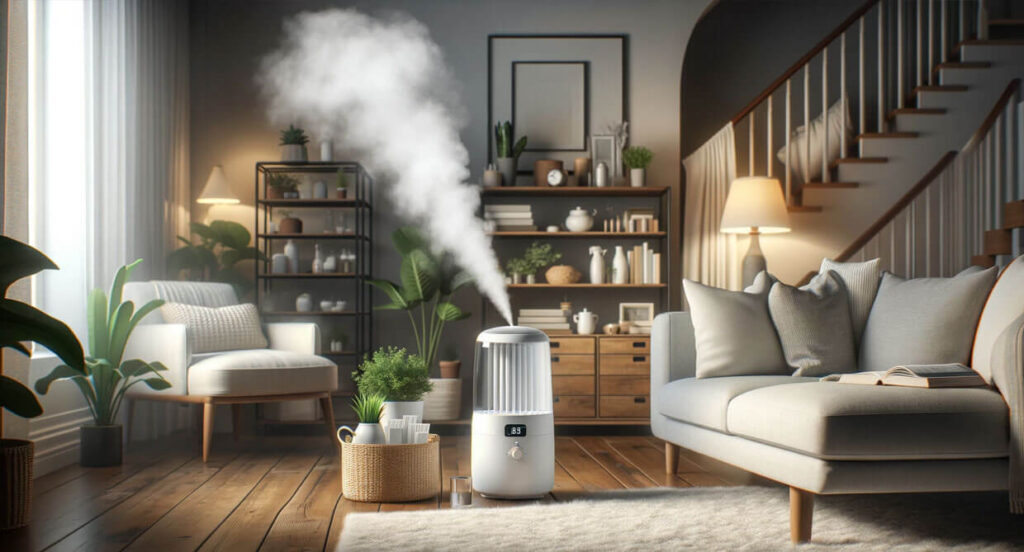Mold is a common problem in many households, but not all mold is created equal. When it comes to mold infestations, black mold often takes center stage due to its reputation for being much more dangerous. This article will examine the differences between black mold and regular mold, helping you understand their characteristics, dangers, and how to effectively deal with them.
What is Black Mold?
Black mold, scientifically known as Stachybotrys chartarum, is a type of mold that thrives in damp, warm environments. Typically, black or dark green in color, it can produce toxic compounds known as mycotoxins. These mycotoxins are released into the air and can be inhaled, leading to various health issues. Black mold usually grows on materials with a high cellulose content, such as wood, paper, and drywall. It requires constant moisture to grow, so it is typically found in areas that have been subject to water damage or high humidity.
Is Black Mold Dangerous?
Yes, black mold is dangerous because it might affect the health. Exposure to black mold can cause various health issues: respiratory problems, allergic reactions, and even neurological problems in the worst cases. The symptoms of black mold exposure are outlined below:
- Chronic coughing and sneezing can be caused by the spores of the mold, which irritate the respiratory tract. Irritation to the eyes, mucous membranes of the nose and throat occur due to contact of mold spores with sensitive areas.
- Rashes are caused in some individuals due to direct contact with the mold.
- Chronic fatigue occurs when the human immune system continues to be under attack by mold spores.
- Persistent headaches are caused by the inhalation of mycotoxins that have an effect on the central nervous system.
People who have pre-existing health conditions, such as asthma or allergies, are likely to have worse symptoms. More serious health conditions, such as lung infections and cognitive impairments, can develop from long-term exposure to black mold.
Ordinary Mold
Ordinary mold denotes all the other mold strains normally found in houses, such as Cladosporium, Penicillium, and Aspergillus. These are the molds that can also cause health effects, but are much less dangerous than black mold. Ordinary mold can be colored green, white, or black and usually has a powdery or fuzzy appearance. These molds thrive in damp environments and can grow on foods, fabrics, and building materials.
Although less dangerous, it may still induce allergic reactions and respiratory problems, especially for people whose immune systems are weakened. The symptoms caused by this type of mold include nasal stuffiness, sore throats, and skin rashes. Sometimes, ordinary mold can produce mycotoxins, but not as potent as those produced by black mold.
Dangerous Black Mold on Wood
Black mold can be typically found growing on wood, especially if the wood had been exposed to moisture. Wood is a preferred media for mold growth because it is porous and contains a lot of cellulose. Black mold on wood can, in a short period, do much damage to the structure, as the mold decomposes the fibers of the wood, thus making it weaker and vulnerable to decay and rot.
Black mold on wood should be addressed as soon as possible to prevent structural damage and potential health risks. In most cases, the removal of mold involves identifying and eliminating the source of moisture, proper cleaning of the infested area with mold-killing solutions, and replacement of the severely damaged wood. In some cases, professional remediation is required to ensure total annihilation of the mold and prevention of recurrence.
Toxic vs. Non-Toxic Mold
Though black mold is known for being toxic, it is not always the case. In general, black mold is not always toxic and some species of black mold don’t create mycotoxins. However, to differentiate the toxic from the non-toxic species of black mold, professional testing is needed.
Non-toxic molds can also be health dangerous, especially if one is prone to mold sensitivities or has a weak immune system. The general health effects of exposure to non-toxic molds are allergy reactions, such as sneezing, runny nose, or itchy eyes. Even though non-toxic molds are less dangerous, it is necessary to treat them as well to avoid potential health problems and damage to property.
Laboratory testing methods, such as air sampling and surface sampling, are conducted to determine mold toxicity by professionals. These tests identify the kind of mold present and whether it is a mycotoxin producer; such knowledge allows the implementation of an appropriate remediation strategy.
How Dangerous is Black Mold?
The danger posed by black mold depends on several factors: the extent of its infestation, whether it produces mycotoxins, and individual sensitivity to mold. Generally, long-term exposure to black mold can be more hazardous than exposure to regular mold.
Large infestations of black mold can release a considerable amount of spores and mycotoxins into the air, increasing the risk of inhalation and subsequent health issues. For people who have a weakened immune system, such as older adults, small children, and people with chronic diseases, black mold can be more dangerous. Besides, those with respiratory issues, like asthma or chronic obstructive pulmonary disease, will suffer more severe symptoms.
How to Identify Black Mold
It is tough to identify black mold; however, there are numerous marks. Here are some:
- Color: It is black or dark green. The most distinctive mark of black mold is its color.
- Texture: Slimy and wet. Most molds are dry and powdery, but not this one. It is wet and slimy due to its high moisture content.
- Smell: Musty and damp odor. Black mold is accompanied by a strong, musty smell when it grows. It appears because mold gives off some kind of chemical—microbial volatile organic compounds (MVOCs).
Identification of black mold can accurately be done only with the help of professionals. Mold inspectors can conduct thorough inspections and tests to confirm the presence of black mold and determine its type and toxicity.
Regular Mold on Wood
Regular mold can also grow on wood surfaces, especially in humid conditions. While it may not be as dangerous as black mold, it can still cause damage to the wood and contribute to health issues. Regular mold on wood appears as spots or patches and can range in color from white and green to brown and black.
Prolonged exposure to regular mold can make the wood weak and cause structural problems. The ways of treating mold on wood include a reduction in moisture levels, cleaning the area with mold-killing solutions, and ensuring ventilation to preclude any further growth. On the flip side, if there is an infestation of mold, then sometimes, wood may have to be replaced, and other professional mold remediation services are solicited.
Black Mold in Shower
Bathrooms, especially showers, are prone to harboring black mold. This is because there is constant moisture. The shower provides warmth and high humidity, and this gives mold a great environment to grow in. Black mold in the shower is characterized by dark spots or patches that appear on grout lines, on tiles, and on shower curtains.
Regular cleaning and good ventilation are very important to prevent the growing of mold. How to prevent mold in the shower includes using a squeegee to wipe off excess water after each use, ensuring good bathroom ventilation by opening windows or making sure the exhaust fans are functional, and cleaning surfaces with mold-killing products. In the case of persistent growth, one can consider painting the walls with mold-resistant paint and having mold-resistant grout to reduce the possibility of mold growing.
Conclusion:
Knowing the difference between black mold and common mold is of prime importance if you wish to have a healthy living environment. Although both are capable of causing health issues and damaging property, black mold is generally more dangerous because of the possibility of mycotoxin production. If you suspect a mold problem in your home, it is imperative you get it addressed.
Regular inspections, proper ventilation, and controlling moisture are ways to prevent mold infestation. If the infestation is serious, or you are not sure about the type, consider hiring a professional mold remediation service to get the job done safely and effectively. Professional services can conduct thorough inspections with correct identification of mold types and effective remediation strategies for the protection of health and property.







